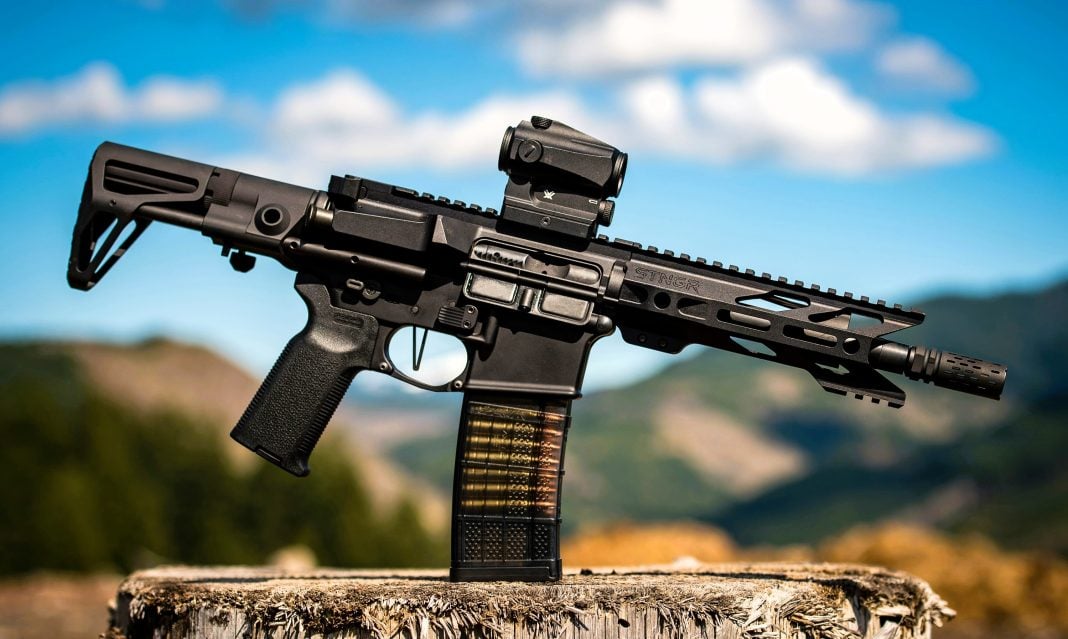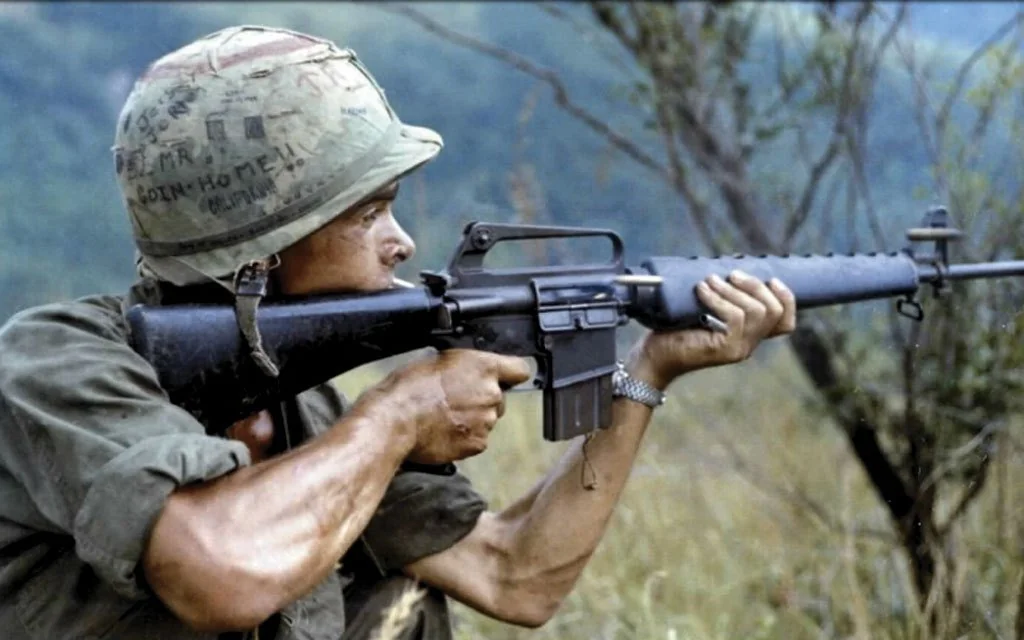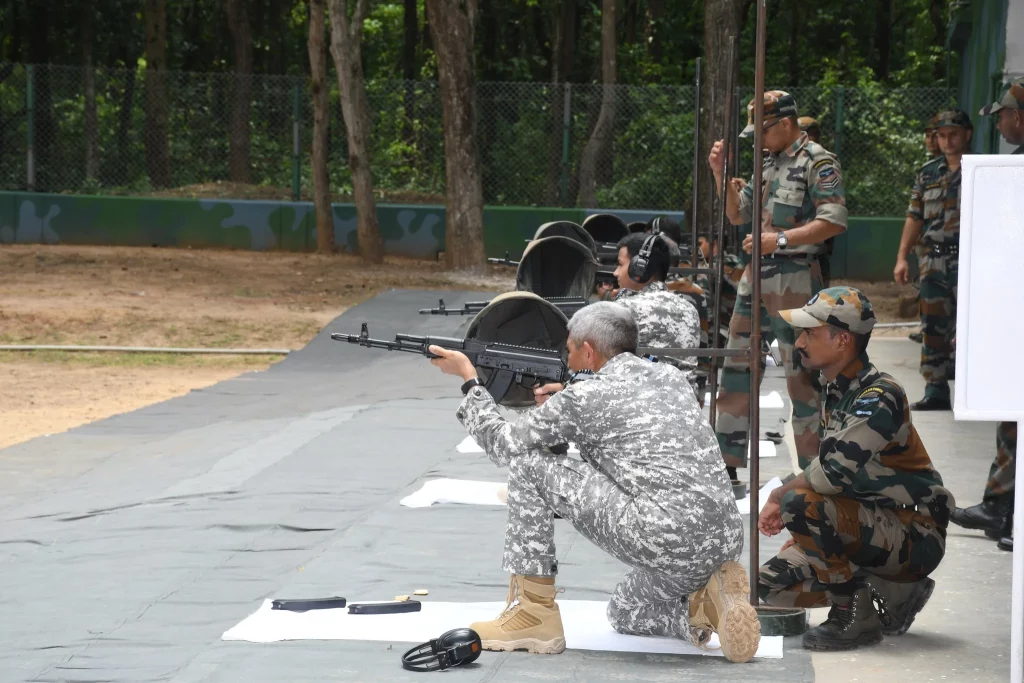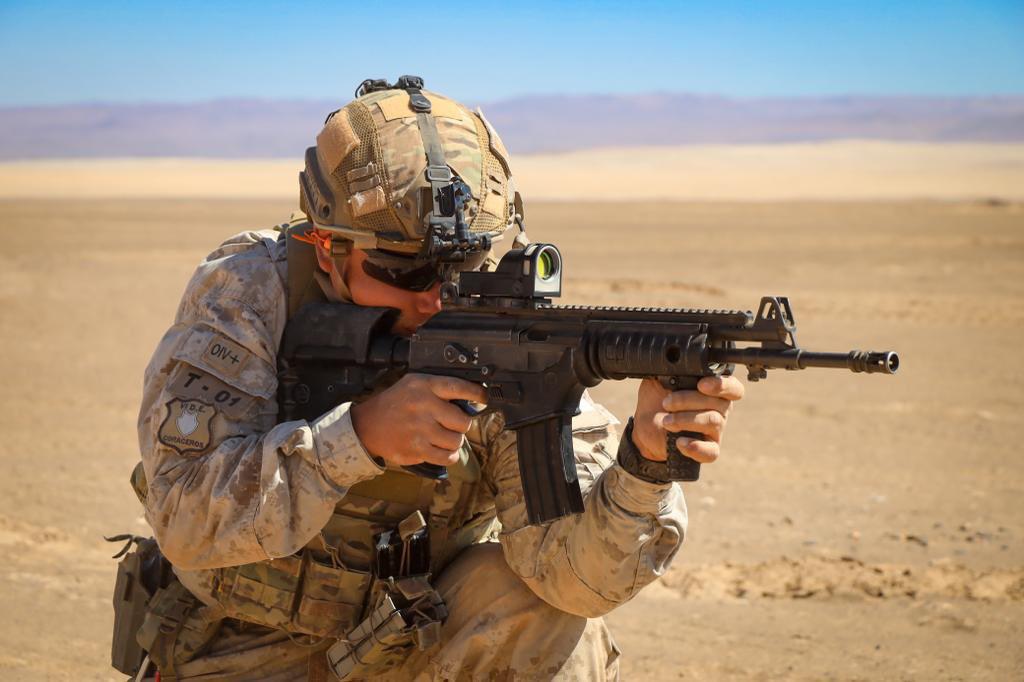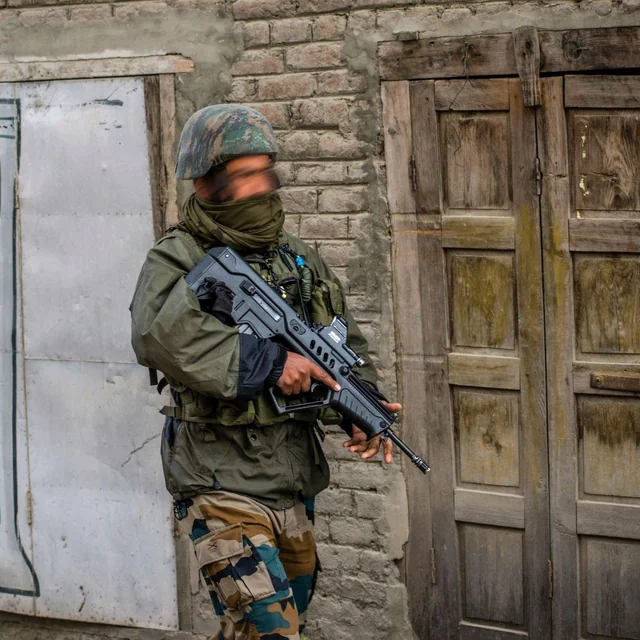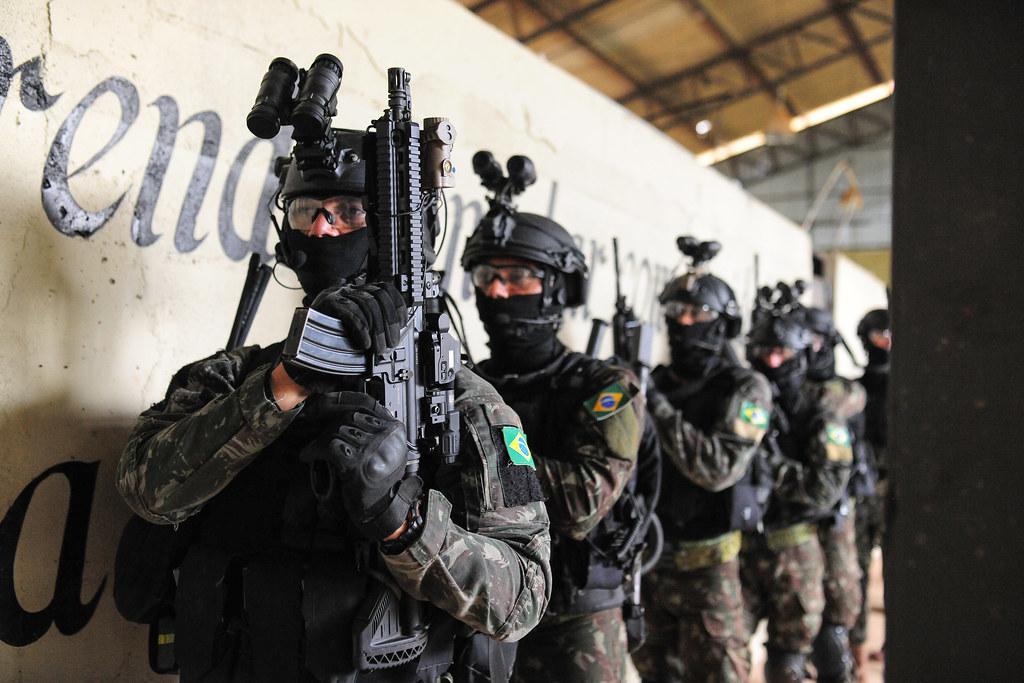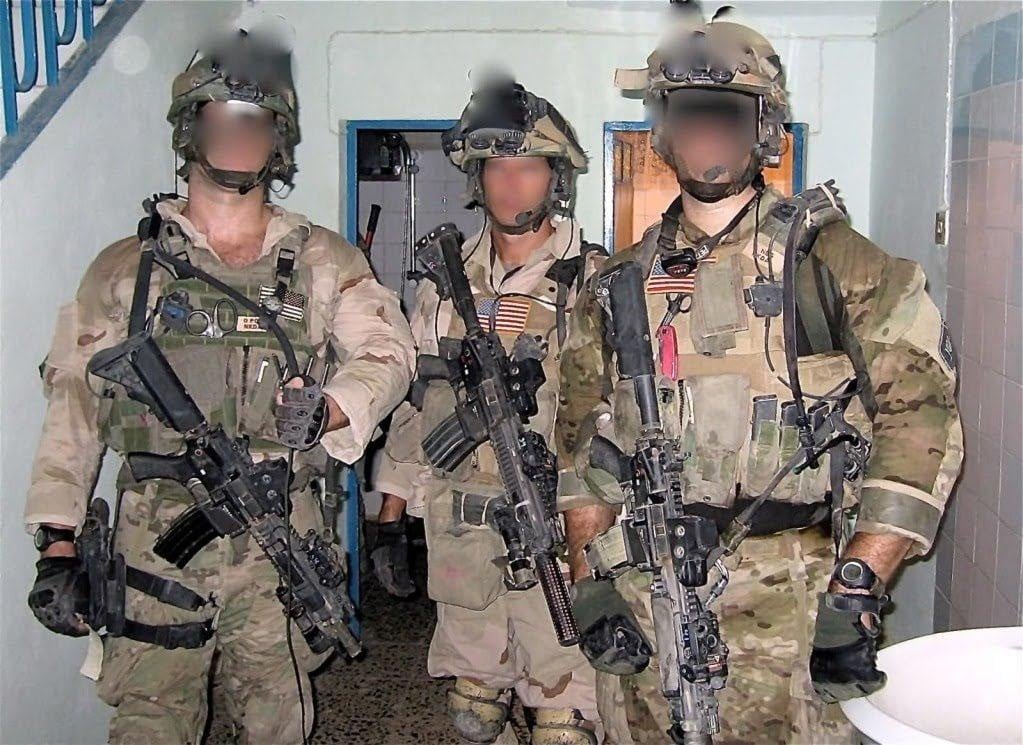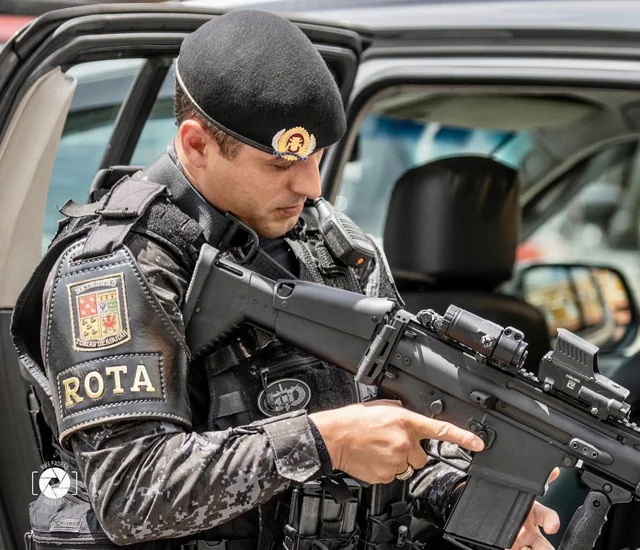In the realm of modern warfare and defense technology, the quest for the best assault rifles remains a topic of keen interest and importance. These firearms, characterized by their capacity to use an intermediate cartridge and a detachable magazine, along with the ability to switch between semi-automatic and full-automatic firing modes, have become the linchpin in the arsenal of the world’s military forces.
Their evolution from their first use during World War II to becoming the standard bearer in military hardware by the late 20th century underscores their pivotal role in shaping combat strategies and outcomes.
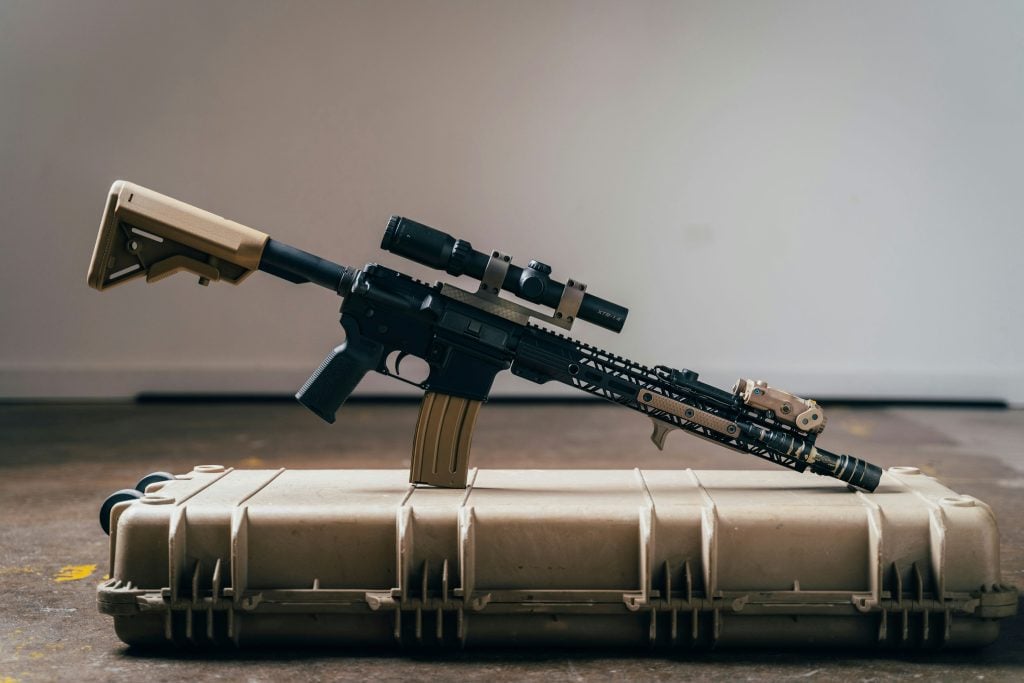
This article embarks on an authoritative exploration of the best assault rifles in the world, diving deep into the history, design, and capabilities of standout models such as the M16, AK-103, Heckler & Koch G36, and several others. It sheds light on how factors like cost, reliability, ergonomics, and versatility play into determining what constitutes the best assault rifle in any given context.
By providing an informed lens through which to view these iconic weapons, the article aims not only to educate but also to engage those with an interest in military technology, defense strategy, or the broader dynamics of global security.
Must Read: 15 Best Aircraft Carriers in the World
1. M16 (USA)
The M16, initially adapted from the ArmaLite AR-15 for the United States military, stands as a hallmark of lightweight, air-cooled, gas-operated, magazine-fed assault rifles. Since its introduction in 1964 during the Vietnam War, this rifle has undergone numerous enhancements to meet the evolving demands of warfare. The M16 family includes several variants, each tailored for specific military needs, showcasing the adaptability and enduring relevance of this firearm in global military operations.
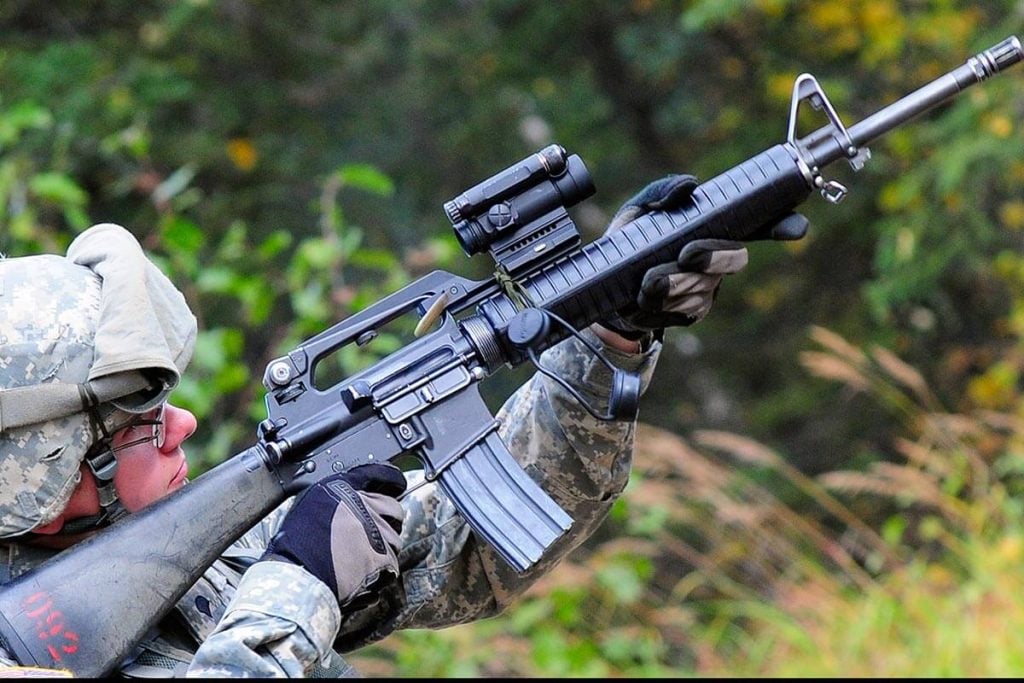
Key Specifications and Variants
- M16A1: Introduced during the Vietnam War, the M16A1 weighs 6.37 lb and features a 20-inch barrel, setting the standard for future modifications.
- M16A2: Adopted in 1983, this model brought significant upgrades including a heavier barrel, improved handguard, pistol grip, and buttstock, along with a new fire selector that allowed for semi-automatic fire and a three-round burst.
- M16A4: Launched in 1997, the M16A4 is equipped with a removable carrying handle and a Picatinny rail, facilitating the attachment of optics and other ancillary devices. It weighs 7.5 lb without a magazine and sling, and 8.81 lb fully loaded.
Performance and Usage
- Cartridge and Rate of Fire: The M16 series rifles use the 5.56×45mm NATO cartridge. They have a rate of fire ranging from 700 to 800 rounds per minute cyclic sustained.
- Effective Range: The effective firing range is 550 meters for point targets and 800 meters for area targets.
- Magazine Capacity: These rifles are compatible with STANAG magazines, which have capacities ranging from 20 to 100 rounds.
Global Adoption and Historical Impact
Since its inception, the M16 has been widely adopted by armed forces around the world and has seen action in numerous conflicts. Its influence extends beyond the U.S. military, with approximately 8 million units produced by 2011. Despite its extensive service record, the U.S. military has largely transitioned to the shorter and lighter M4 carbine for frontline combat units. Moreover, in a significant shift in armament strategy, the U.S. Army selected the SIG MCX SPEAR in April 2022 as part of the Next Generation Squad Weapon Program, marking a future beyond the M16/M4 series in military operations.
The M16’s enduring legacy in military history underscores its effectiveness and the pivotal role it has played in shaping modern warfare tactics. Its continual adaptations reflect the dynamic nature of combat needs and technological advancements in firearm design.
2. AK-103 (Russia)
The AK-103, a modernized version of the renowned AK-47 designed by Mikhail Kalashnikov, stands as a significant evolution in the lineage of this iconic series. Originating from Russia, this assault rifle has been in service since 2001 and is manufactured by the esteemed Kalashnikov Concern.
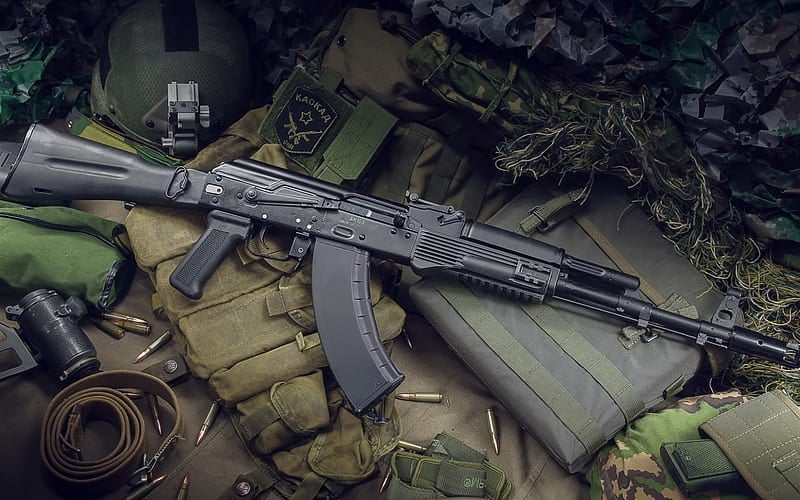
Overview and Design
The AK-103 is designed to operate in diverse conditions ranging from dusty deserts to humid jungles, maintaining reliability and durability. Its design includes a gas-operated, rotating bolt system, which is a hallmark of the AK series’ robust engineering.
Specifications
- Mass: 3.6 kg (7.9 lb) empty, 4.1 kg (8.2 lb) with loaded magazine
- Length: 943 mm (37.1 in) with stock extended, 705 mm (27.8 in) with stock folded
- Barrel Length: 415 mm (16.3 in)
- Caliber: 7.62mm
- Cartridge: 7.62×39mm
- Rate of Fire: 600 rounds/min
- Muzzle Velocity: 715 m/s (2,346 ft/s)
- Effective Firing Range: Up to 500 m (550 yd)
- Feed System: 30-round detachable box magazine
- Sights: Iron sights, with a dovetail side rail for mounting optics
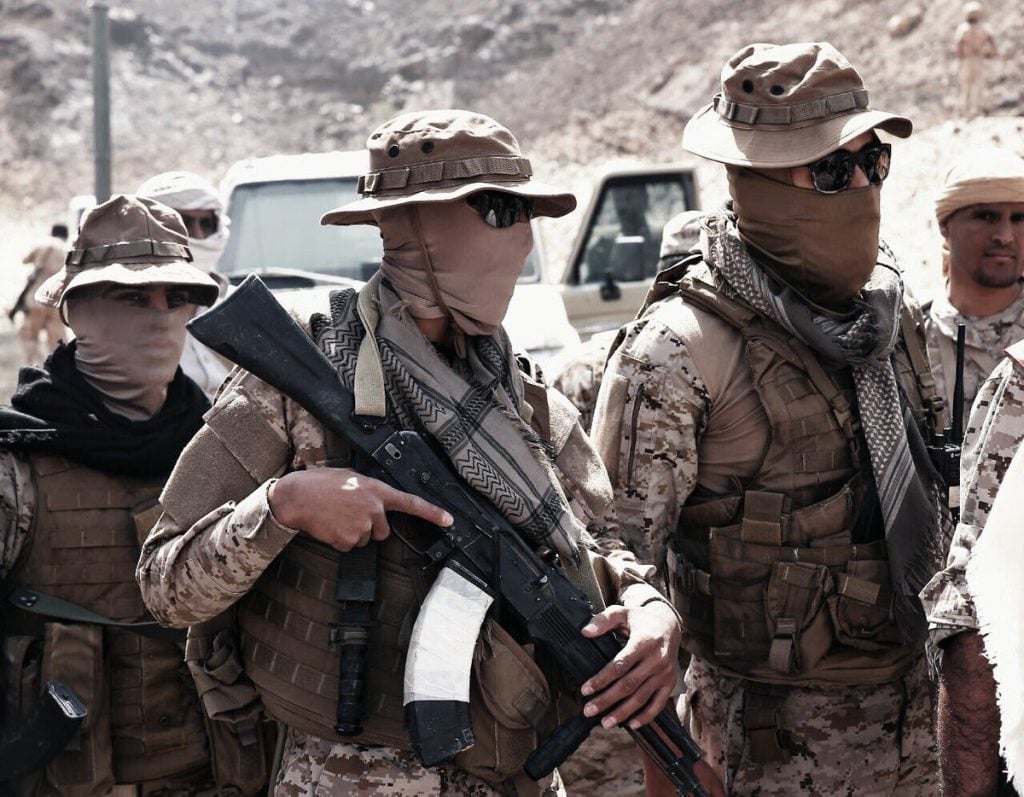
Service and Usage
Deployed in various conflicts such as the Iraq War and the ongoing conflict in Ukraine, the AK-103 has proven its mettle in actual combat scenarios. Its widespread use by both state and non-state actors underscores its adaptability and effectiveness in various tactical environments.
Users and Variants
The AK-103 is utilized by numerous countries including India, Venezuela, and Russia, and by non-state actors like the Guardians of Religion Organization. Notable variants include the AK-103-1 with semi-automatic firing capability, and the AK-103-2 which offers a three-round burst feature. Additionally, international adaptations like the Vietnamese STL-1A and the Chinese CS/LR11 highlight the global influence and versatility of this rifle model.
Production and Cost
Since its inception in 1993, the AK-103 continues to be produced by Kalashnikov Concern, with the unit cost for government contracts reported around US$150–160 in 2014. This cost-effectiveness combined with robust features makes the AK-103 a preferred choice in global arms markets.
Magazines and Accessories
The rifle is compatible with a range of magazines, including the modern 30-round magazines made from ABS plastic, which are lighter and more durable than the earlier steel versions. The integration of accessory mounts allows for the attachment of various optical and night sights, enhancing its operational versatility.
The AK-103 represents a significant step forward in the evolution of assault rifles, combining the legendary resilience and simplicity of the AK-47 with modern tactical demands. Its continued use in global conflicts and by various armed forces attests to its standing as one of the most effective and reliable assault rifles in the world.
Also Read: Top 5 Fastest Missiles in the World
3. Heckler & Koch G36 (Germany)
The Heckler & Koch G36, developed in the early 1990s, represents a significant evolution in assault rifle design, primarily intended to replace the heavier G3 battle rifle. This 5.56×45mm rifle was designed by Heckler & Koch GmbH in collaboration with the Bundeswehr, marking a new era for modern infantry weapons due to its advanced engineering and modular design.
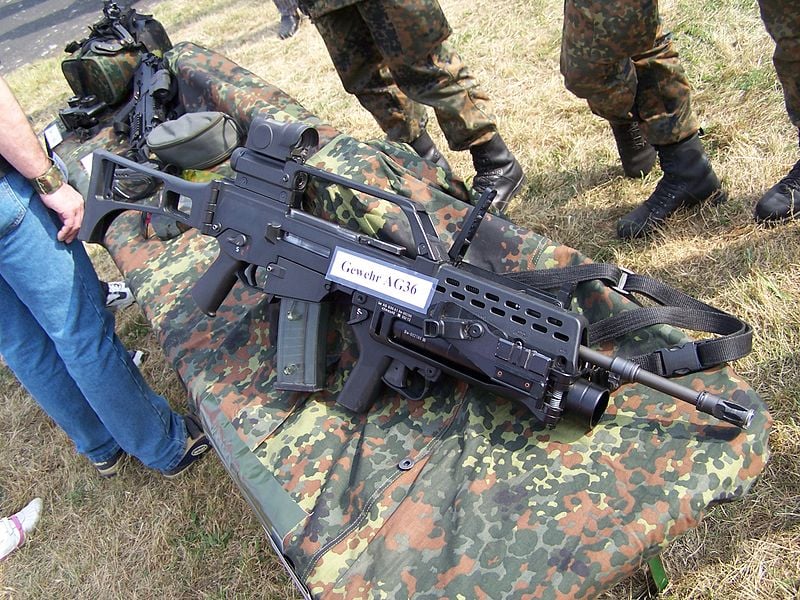
Design and Features
The G36 is renowned for its gas-operated action and uses a 30-round detachable box magazine or a 100-round C-Mag drum magazine, catering to various operational needs. Its free-floating barrel, secured with a special nut, enhances accuracy, while the cold hammer-forged barrel features a chrome-lined bore with 6 right-hand grooves and a 1:178 mm rifling twist rate, ensuring long-term durability and reliability under harsh conditions.
Variants and Adaptability
The G36 family includes several variants such as the G36K, G36C, and MG36, each designed for specific operational roles from compact engagements to support roles with increased firepower. The G36V and G36KV serve as export models, featuring altered sight setups and bayonet mounts, whereas the G36KA4, tailored for German special forces, includes enhancements like a heavier barrel and a modernized stock.
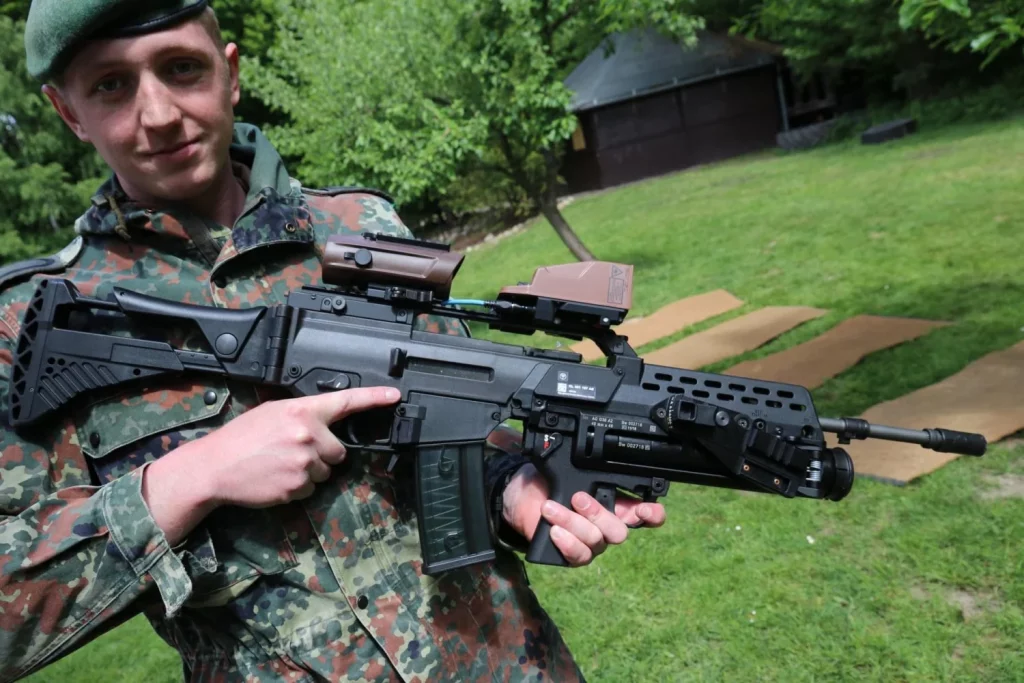
Operational Performance
With a rate of fire of 750 rounds per minute and a muzzle velocity of 2,788 feet per second, the G36 stands out for its performance in the field. The integration of a foldable buttstock significantly reduces the weapon’s overall length, facilitating easier transport and maneuverability in confined spaces. Additionally, the G36 can be equipped with an HK 40 mm under-mounted grenade launcher, vastly increasing its battlefield utility.
Advanced Upgrades and Global Use
Heckler & Koch also offers a Performance Upgrade Kit, which includes an optimized flash hider, a new handguard, and ergonomic adjustments to the stock and magazine release mechanisms, further enhancing the rifle’s functionality. Adopted by over 40 countries, the G36’s reliability is proven across diverse environments, from dusty landscapes to cold terrains, making it a preferred choice for military forces worldwide.
Manufacturing and Influence
Licensed for local production in Saudi Arabia, the first domestically produced G36 was completed on 30 June 2009, showcasing its global impact and adaptability. The rifle’s design allows for easy maintenance and quick adaptation to various combat scenarios, reflecting Heckler & Koch’s commitment to providing versatile and reliable solutions for modern warfare.
The G36 continues to be a pivotal asset in global defense arsenals, combining traditional robustness with innovative adaptations to meet contemporary military needs. Its widespread adoption and continued use underline its status as one of the most effective and versatile assault rifles on the market.
Also Read: 11 Best Sniper Rifles in the World
4. Heckler & Koch G3 (Germany)
The Heckler & Koch G3 rifle, a robust battle rifle that fires the 7.62×51 NATO cartridge, is renowned for its exceptional reliability, especially in adverse and dirty environments. Developed in the late 1950s, the G3 has been a mainstay in military arsenals worldwide, known for its enduring service across various terrains and combat situations.
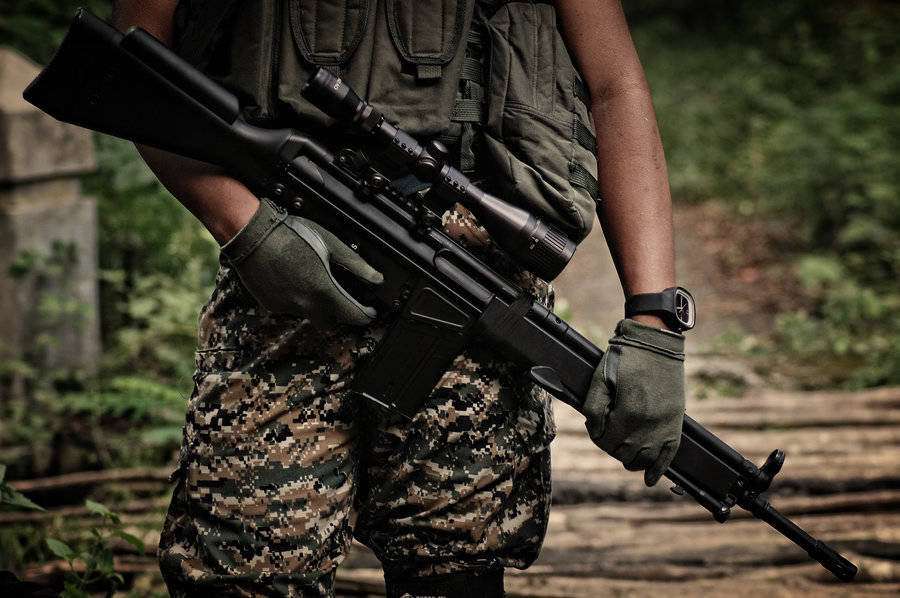
Design and Operational Features
The G3 rifle operates on a distinctive roller-delayed blowback system, which contributes significantly to its reliability and effectiveness in the field. This operating mechanism ensures that the rifle can withstand harsh conditions without compromising performance.
Modular Components
One of the standout features of the G3 is its modular design. The rifle’s butt-stock, fore-stock, and pistol-grip/fire-control assembly are interchangeable, allowing for extensive customization based on operational needs or user preference.

Performance and Tactical Use
With an effective range of 400 meters, which extends to 600 meters when equipped with a scope, the G3 is versatile in various combat scenarios. However, it is important to note that the rifle’s substantial weight and size, along with its powerful ammunition, can result in considerable recoil. This has been reported to cause cheek bruises during sustained full-auto fire, a factor that operators need to manage in combat situations.
Adoption and Service
The G3 rifle has been adopted by over 40 countries worldwide, including Afghanistan and Zimbabwe, highlighting its widespread trust and reliability in global military operations. Its significant adoption rate underscores the rifle’s adaptability and effectiveness in diverse combat environments.
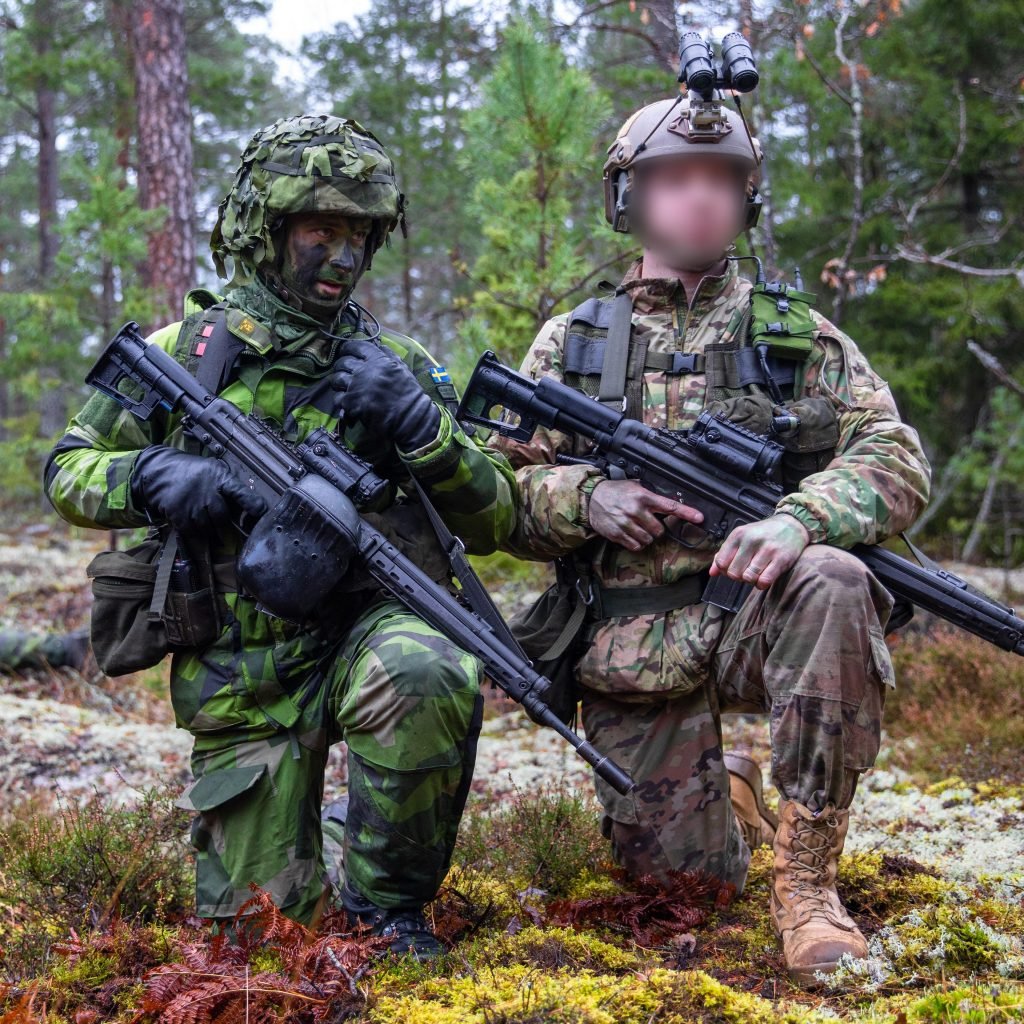
Current Use and Reliability
Despite the emergence of newer rifle models, the G3 continues to be a critical asset in military arsenals, particularly noted for its ongoing use by the Pakistani Army and Law Enforcement Agencies. Veterans of the Pakistani military commend the G3’s reliability, especially those who have relied on it in frontline engagements against formidable adversaries like the Taliban.
Summary of Key Specifications
- Caliber: 7.62×51 NATO
- Operating System: Roller-delayed blowback
- Effective Range: 400 meters, up to 600 meters with scope
- Modularity: Interchangeable butt-stock, fore-stock, and pistol-grip/fire-control assembly
- Recoil Considerations: Significant with potential for cheek bruises during extended use
The G3’s legacy as a reliable and powerful battle rifle continues to hold strong, with its proven track record in various military and law enforcement contexts around the world. Its design and functionality remain a testament to Heckler & Koch’s commitment to quality and durability in firearm manufacturing.
5. Steyr AUG (Austria)
The Steyr AUG, designed by Steyr-Daimler-Puch in the 1960s and produced by Steyr Mannlicher GmbH & Co KG, is a hallmark of modern assault rifle design. This Austrian bullpup rifle, officially adopted by the Austrian Army as the StG 77, has been in production since 1977. Renowned for its modular design, the AUG allows for quick configuration changes to suit various operational needs, including different combat roles such as light machine gun, submachine gun, and designated marksman rifle.
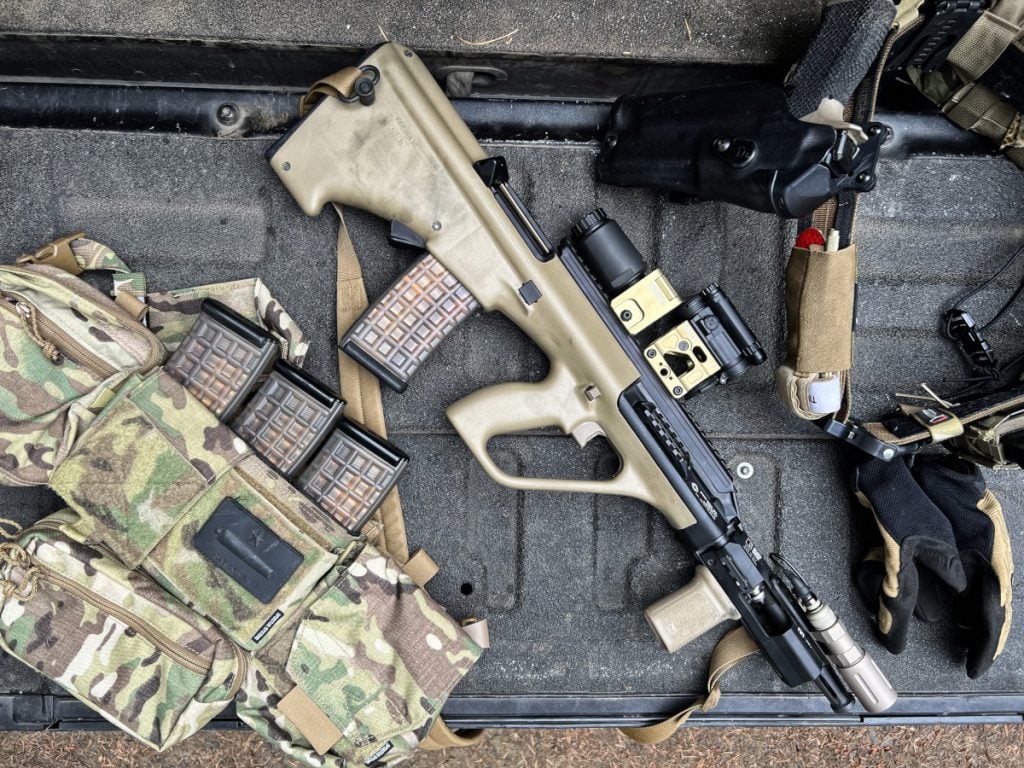
Design and Features
The AUG is distinguished by its bullpup configuration, where the action and magazine are positioned behind the trigger, allowing a full-length barrel in a compact design. This setup enhances maneuverability without sacrificing barrel length and accuracy. The rifle is primarily constructed from lightweight, durable materials such as polymers and aluminum, which contribute to its ease of use and maintenance.
Modular System
The modular nature of the AUG is one of its most significant features. It consists of six main assemblies:
- Barrel
- Receiver
- Bolt carrier
- Trigger mechanism
- Stock
- Magazine
These components are easily interchangeable, offering adaptability across various scenarios. The quick-change barrel system, which is cold hammer-forged, ensures precision and durability, locking into the receiver with a robust eight-lug arrangement.
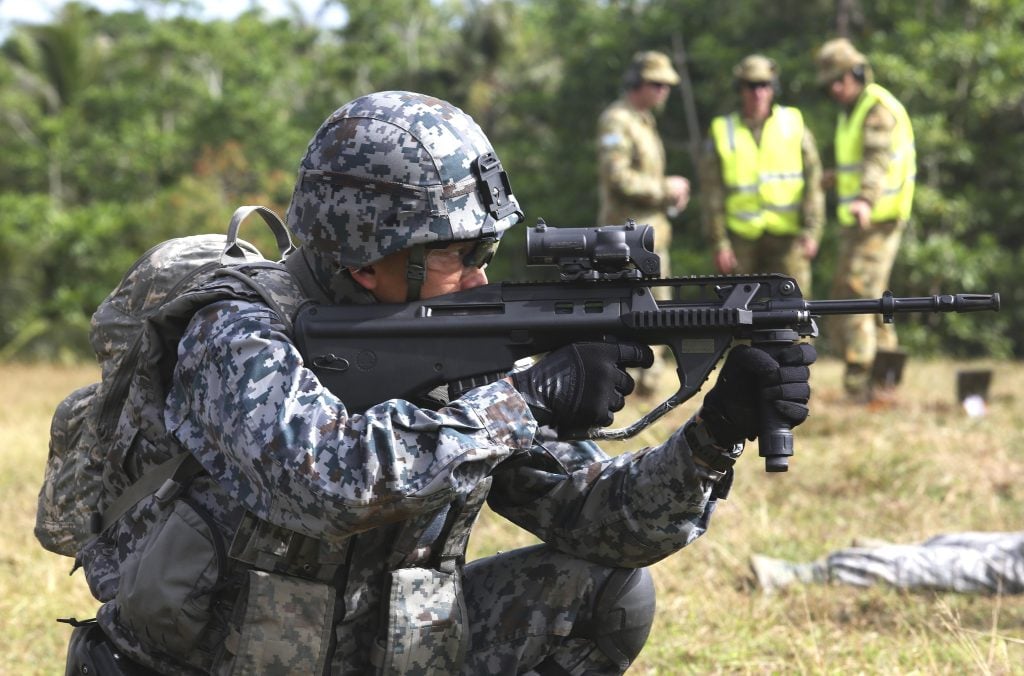
Operational Performance
The AUG operates on a short-stroke gas piston system, which is known for reliability in both short and long barrel configurations. It employs a progressive trigger system that allows operators to engage in semi-automatic or fully automatic fire by varying the pressure applied to the trigger. Additionally, the rifle is equipped with a 1.5x telescopic sight by Swarovski Optik, enhancing target acquisition in various lighting conditions.
Firing Capabilities
- Caliber: 5.56x45mm NATO
- Barrel Length: Varies with model
- Magazine Capacity: 30 or 42 rounds, with a proprietary translucent-polymer double-column box magazine
- Sight: 1.5x telescopic sight and backup iron sights
Tactical Use and Variants
The AUG’s design supports various roles on the battlefield:
- AUG HBAR: A variant with a heavier and longer barrel, integrated bipod, and suited for sustained fire roles.
- AUG 9mm: A submachine gun variant that uses the 9x19mm Parabellum cartridge, ideal for close-quarters combat.
The rifle also features a safety mechanism located above the hand grip, which is crucial for preventing accidental discharges. For grenadiers, the AUG can launch NATO STANAG type 22 mm rifle grenades from its integral flash hiders without needing an adapter, demonstrating its versatility in field operations.
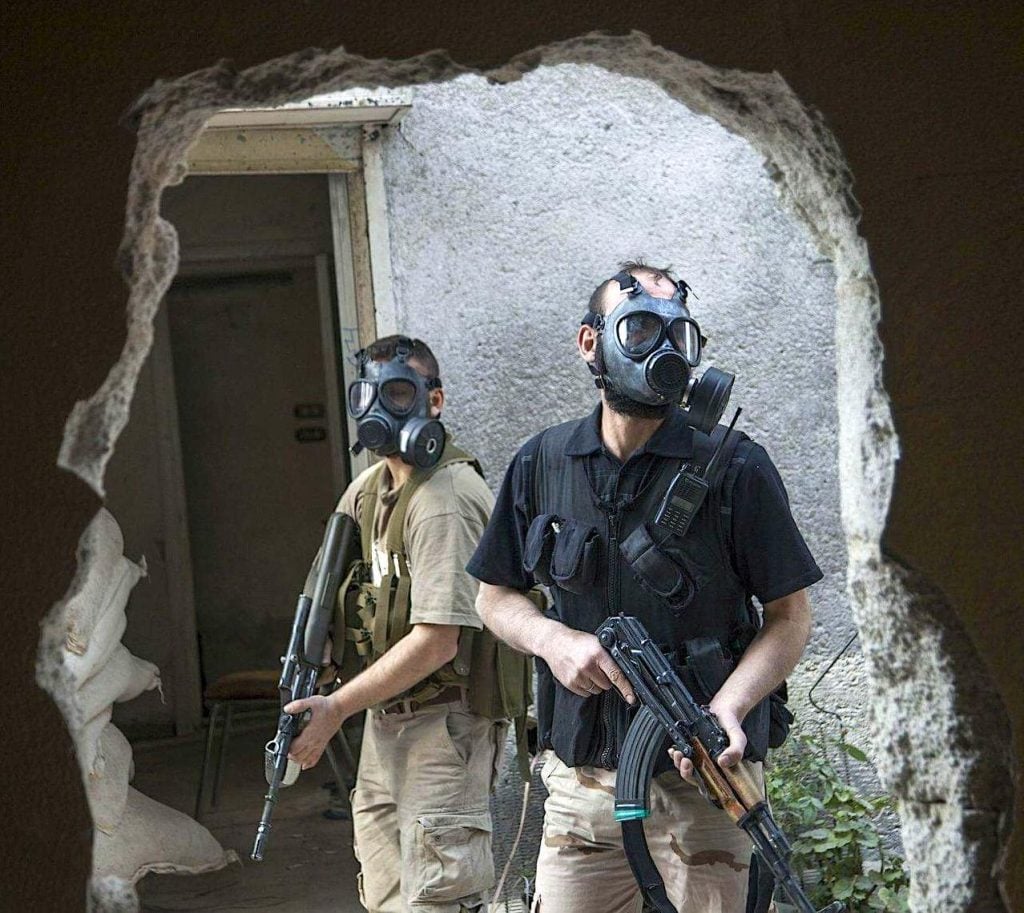
Global Impact and Adoption
Since its introduction, the AUG has seen extensive use in various international conflicts, including the Gulf War and the War in Iraq. Its widespread adoption by military forces around the world, such as in Austria, Australia, and Ireland, underscores its effectiveness and reliability. The Irish Defence Forces, for instance, utilize the AUG with modern adaptations like the Trijicon ACOG optics and Diemaco M203 grenade launchers, highlighting the rifle’s capability to integrate contemporary military technology.
The Steyr AUG continues to be a pivotal asset in global defense arsenals, combining traditional robustness with innovative features to meet the dynamic needs of modern warfare. Its continued evolution, such as the AUG/A3 M1 with enhanced optic attachments and improved gas regulators, ensures that it remains at the forefront of assault rifle technology.
6. Galil (Israel)
The Galil rifle, developed by Israeli Military Industries (IMI) in the 1970s, was designed in response to the unique demands of the Israeli Defense Forces (IDF) and the potential threat of an arms embargo. Combining elements from the AK-47 and the M16, the Galil was celebrated for the reliability of the AK-47 and the accuracy of the 5.56mm NATO round used by the M16. Its design was heavily influenced by the Finnish Valmet M62, often regarded as the “Cadillac” of the AK world.
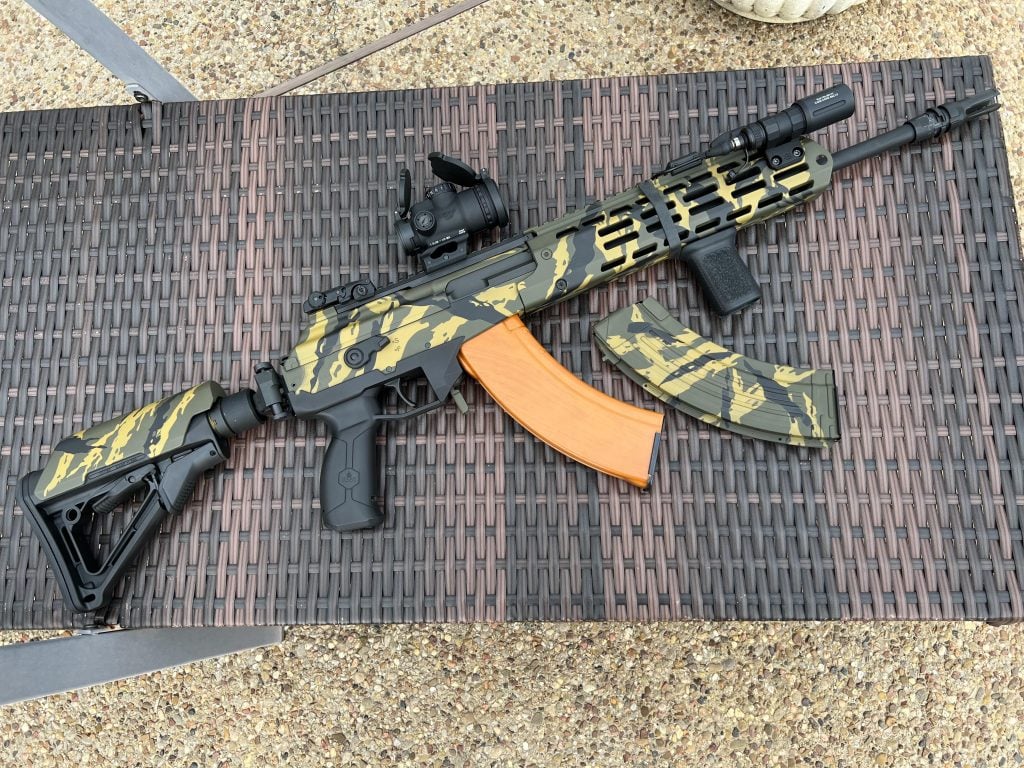
Development and Service
The Galil was officially adopted by the IDF in May 1973 and came in three primary configurations: the Automatic Rifle Machine-gun (ARM), the Automatic Rifle (AR), and the Short Automatic Rifle (SAR). Despite its capabilities, the Galil was never the principal rifle due to its production costs and the IDF’s preference for the M16s and M4s. It served as the official service rifle from the mid-1970s until the early 1990s and saw its first full combat deployment during the Israeli invasion of Lebanon in 1982. By 2000, the Galil ARM and AR variants were phased out and replaced by M16 and M4 variants, with the Galil SAR remaining in use by some rear-line services until around 2004.
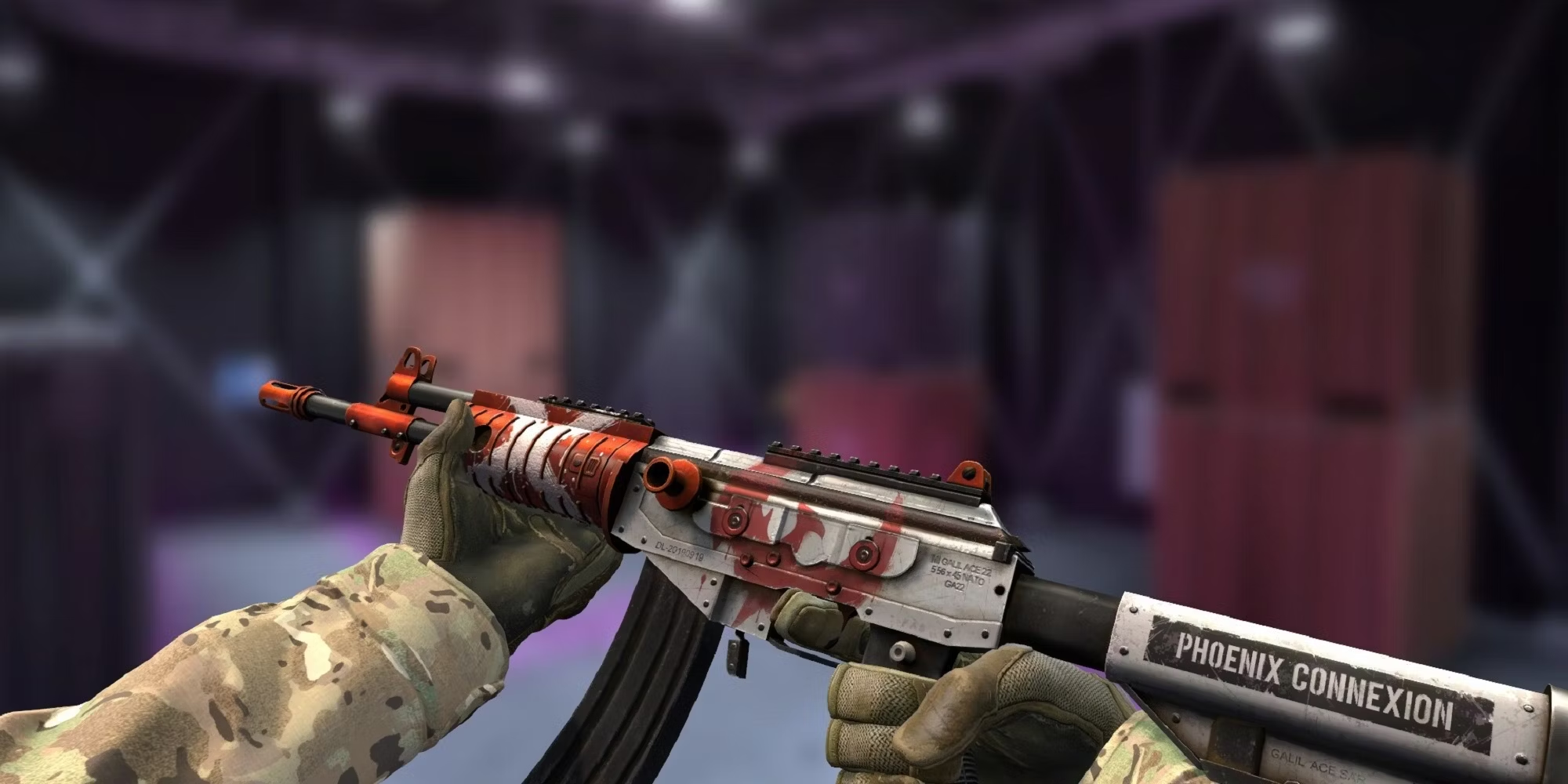
Design Features and Variants
The Galil features a bottle opener in the rear of the foregrip and the ability to launch rifle grenades, showcasing its adaptability to various combat needs. The standard Galil AR version includes a high-impact plastic handguard and a side-folding tubular metal skeleton stock. The shorter barrel Galil SAR was used with the Armored Corps until 2005, and the Galil ARM was equipped with a carrying handle, folding bipod, and a larger wooden handguard for enhanced support.
Table of Key Variants
| Variant | Description |
|---|---|
| Galil AR | Standard rifle with plastic handguard and side-folding stock |
| Galil SAR | Shorter barrel for armored corps |
| Galil ARM | Features carrying handle and bipod for support roles |
| Micro Galil | Compact version with a new frame and shorter barrel |
| Galil Sniper (Galatz) | Optimized for accuracy with 7.62×51mm NATO ammunition |
| Galil ACE | Modern version produced in multiple calibers |
Global Use and Modern Adaptations
The Galil has been adopted by various military forces worldwide, including countries like India, Colombia, and South Africa. The modern Galil ACE version is produced in multiple calibers to meet current tactical demands. The Galil Sniper variant, known as Galatz, is used for sharpshooting with high-quality ammunition. Additionally, civilian versions such as the Golani feature a new-production milled semi-automatic receiver and barrel built in the United States.
Tactical Impact and Legacy
Despite being replaced by the M16 in frontline units by the 1990s, the Galil is still used by tanker crews, artillery personnel, and Israeli law enforcement. The IDF is currently phasing out the M16 and Galil with the new IWI Tavor bullpup assault rifle. The Galil’s design allows for easy maintenance and quick adaptation to various combat scenarios, reflecting its enduring legacy and continued relevance in modern warfare.
7. Tavor TAR-21 (Israel)
The Tavor TAR-21, developed by Israel Military Industries (now Israeli Weapon Industries) and introduced in the late 1990s, is a bullpup-configured assault rifle that has become a standard issue for the Israeli Defense Forces. Its design was spearheaded by gun designer Zalmen Shebs, aiming to meet the specific needs of modernized, rugged, and reliable urban warfare.
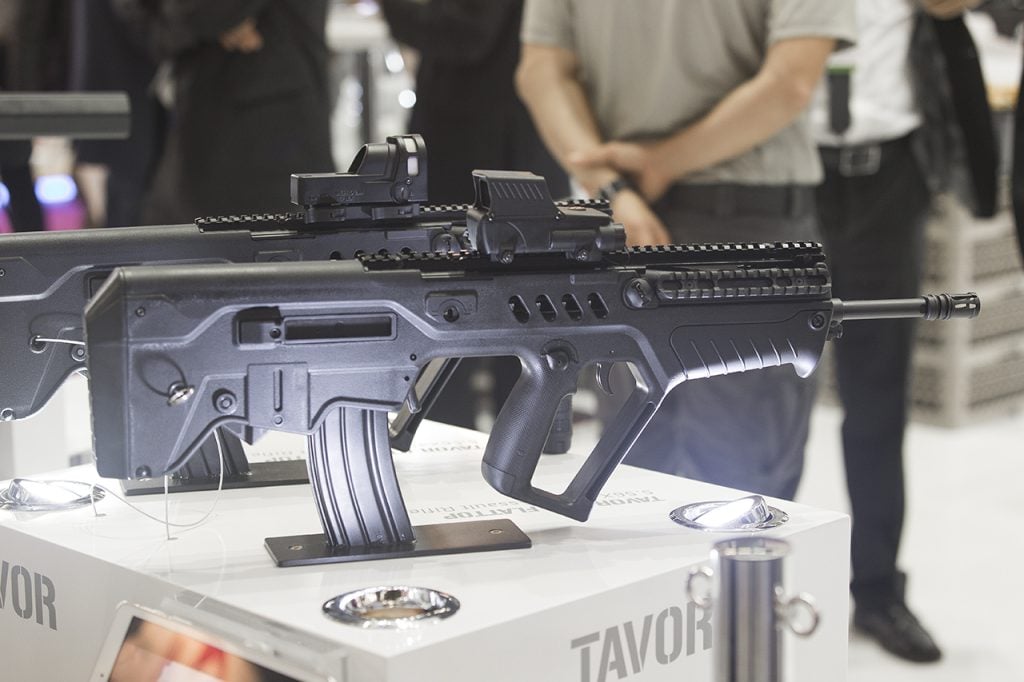
Design and Features
The TAR-21 features a bullpup design that places the action and magazine behind the trigger, resulting in a compact size without compromising barrel length. This design enhances maneuverability and balance, making it particularly suitable for close-quarters combat. The rifle is constructed using high-strength polymer, ensuring durability while keeping the weight manageable.

Key Specifications:
- Caliber: 5.56x45mm NATO
- Barrel Length: 18 inches standard, with other variants including 16.5 and 15.5 inches
- Overall Length: 720 mm without suppressor
- Weight: Approximately 7.9 lbs (3.6 kg) without magazine
- Rate of Fire: 750-900 rounds per minute
- Magazine Capacity: Uses STANAG magazines, typically 30 rounds
Advanced Engineering
The TAR-21 is equipped with a long-stroke piston system which is known for its reliability under adverse conditions. The barrel is made from cold-hammer-forged CrMoV steel, which is chrome-lined for longevity and corrosion resistance. Its waterproofing features ensure that the rifle performs reliably in various environmental conditions.
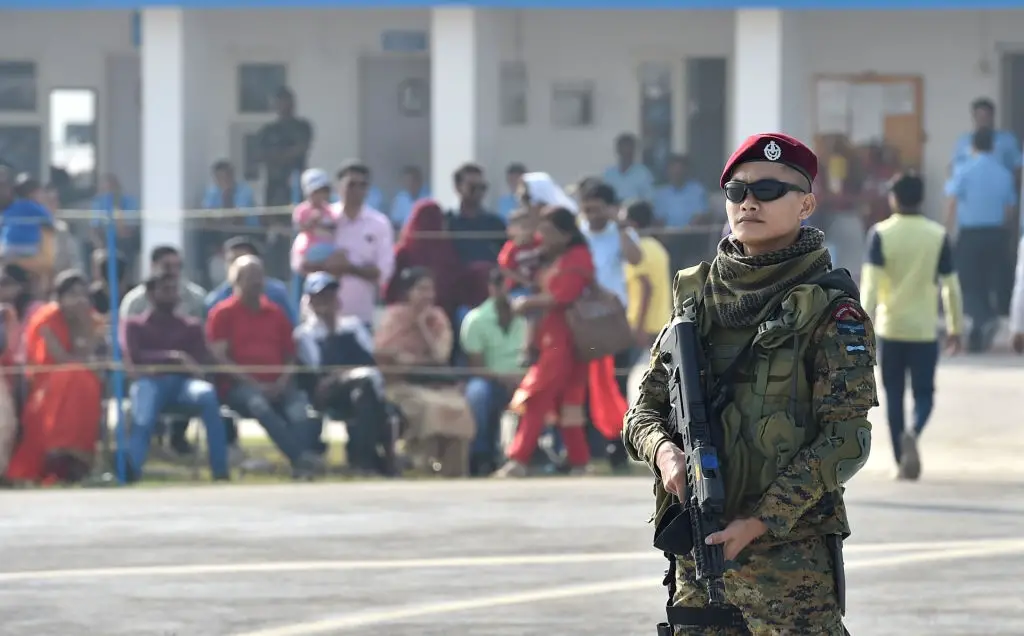
Unique Features:
- Ambidextrous Controls: Includes an ambidextrous fire mode selector and ejection ports that can be configured for either left or right-handed shooters.
- Last Round Bolt-Open Catch: Enhances reloading efficiency by holding the bolt open after the last round is fired.
Variants and Adaptability
The flexibility of the TAR-21 is demonstrated through its multiple variants, each tailored for specific operational roles.
Table of Key Variants
| Variant | Description |
|---|---|
| GTAR-21 | Equipped with a notched barrel to accept an M203 grenade launcher. |
| CTAR-21 | Compact variant with a shorter 15-inch barrel for vehicular and urban use. |
| STAR-21 | Sniper variant fitted with a bipod and Trijicon ACOG 4× sight for designated marksman roles. |
| Tavor X95 | Updated standard infantry weapon of the IDF since 2009, featuring improved ergonomics and modularity. |
| Tavor 7 | Chambered in 7.62x51mm NATO for increased stopping power and range. |
Operational History
Since its adoption, the TAR-21 has seen extensive use in various conflicts around the globe, including the South Thailand insurgency, multiple conflicts involving Israel and Gaza, the 2020 Nagorno-Karabakh war, and the ongoing conflict in Ukraine. Its use by multiple countries across different continents underscores its reliability and the trust placed in it by military forces worldwide.
Global Adoption
The TAR-21 is not only a staple in Israeli defense but is also used by military and law enforcement units around the world. Countries such as India, Brazil, and Ukraine have incorporated the Tavor into their arsenals, appreciating its adaptability and performance in diverse conditions.
The Tavor TAR-21 continues to evolve, incorporating modern technology and feedback from battlefield experiences to meet the changing demands of warfare. Its widespread use and continued development make it a key player in the future of small arms technology.
8. SIG SG 550 (Switzerland)
The SIG SG 550, also known as the Stgw 90, is a product of Swiss precision and engineering, designed and manufactured by SIG Sauer AG (formerly Schweizerische Industrie Gesellschaft). Developed during the 1970s and 1980s, the rifle was introduced to the market in 1986 and has since seen widespread adoption, with over 600,000 units delivered globally.
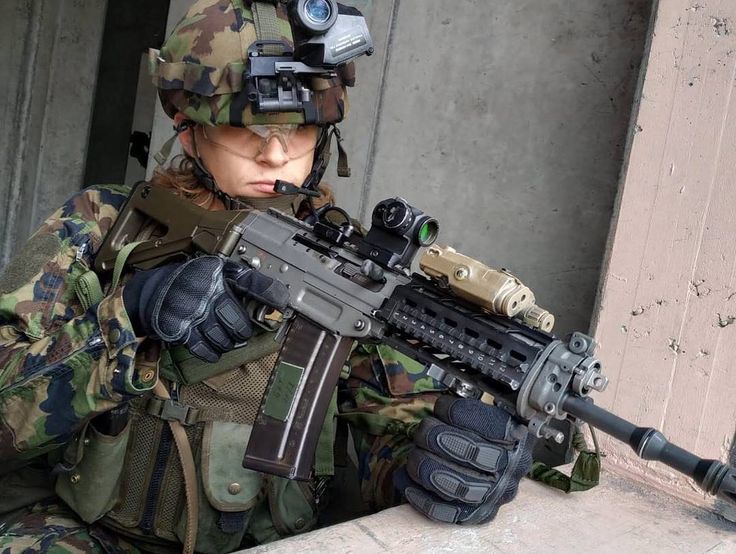
Design and Engineering
The SIG SG 550 is renowned for its robust construction and advanced engineering. It utilizes a gas-operated, piston-driven long-stroke operating system combined with a rotary bolt locking mechanism. This design ensures reliable operation under a variety of environmental conditions, making it suitable for military use worldwide.
Features and Specifications
- Operating System: Gas-operated with a piston-driven long stroke
- Locking Mechanism: Rotary bolt
- Fire Selector: Ambidextrous safety and fire selector switch with settings for safe, single fire, 3-round burst, and fully automatic fire
- Magazine Type: Translucent polymer magazines available in 20-round standard capacity, with options for 30, 10, and 5 rounds
- Stock: Side-folding skeletonized buttstock
- Material: High-strength polymer components with a steel receiver housing, finished with Ilaflon for durability
Table of Key Features
| Feature | Description |
|---|---|
| Barrel Characteristics | Cold hammer-forged with a “bird cage” type flash suppressor, 6 right-hand grooves, 254 mm rifling twist rate |
| Sights | Iron sights adjustable for windage and elevation, rear rotating diopter drum, hooded front post |
| Sight Radius | 540 mm (21.3 in) |
| Optional Attachments | Kern 4×24 telescopic sight, quick-detachable rails for optics |
| Additional Equipment | Comes standard with a spare magazine, sling, cleaning kit, and a loading aid |
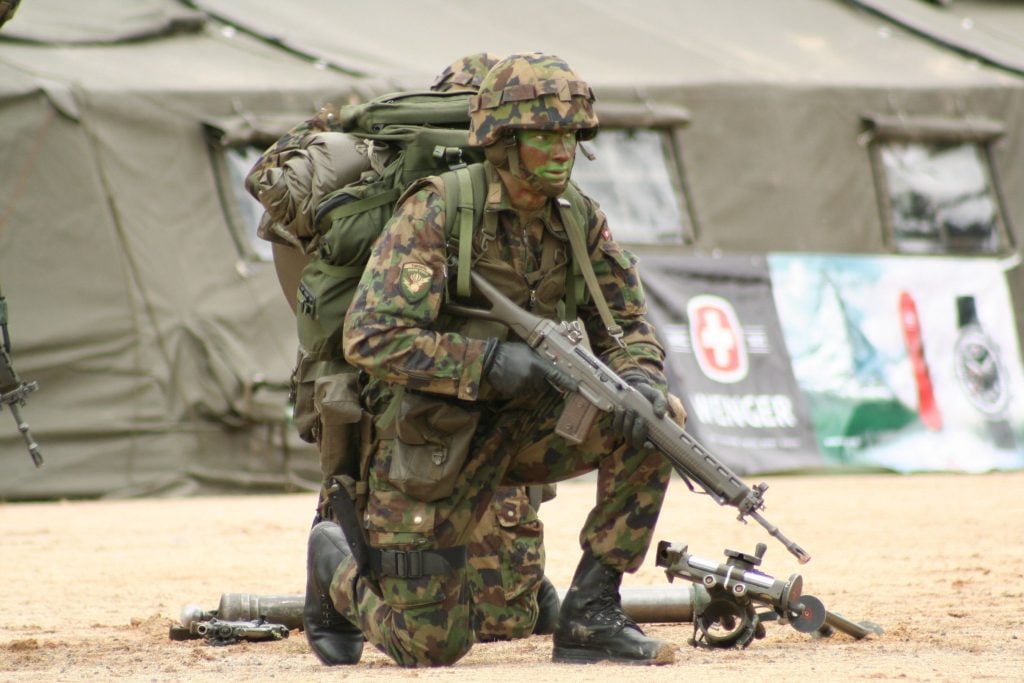
Performance and Reliability
The SIG SG 550 is designed to perform exceptionally in adverse conditions. Its chamber bore is slightly looser to ensure reliable feeding and extraction of ammunition, a critical feature in battle rifles. The rifle’s accuracy is notably high, capable of achieving 1 MOA accuracy, making it more precise than most shooters can exploit. Standard military specifications suggest that the SIG SG 550 maintains consistent accuracy of about 2 MOA, which is commendable for a rifle designed for rugged military use.
Tactical Applications and Accessories
The full-sized models of the SG 550 and 551 can be equipped with the SIG 40 mm GL 5040/5140 grenade launcher, which mounts under the barrel and replaces the lower handguard. This adds a versatile capability for launching a variety of 40mm grenades. Additionally, the rifle can accept both the NATO-pattern KCB-77 and the American M9 bayonet, further enhancing its utility in close-quarters combat.
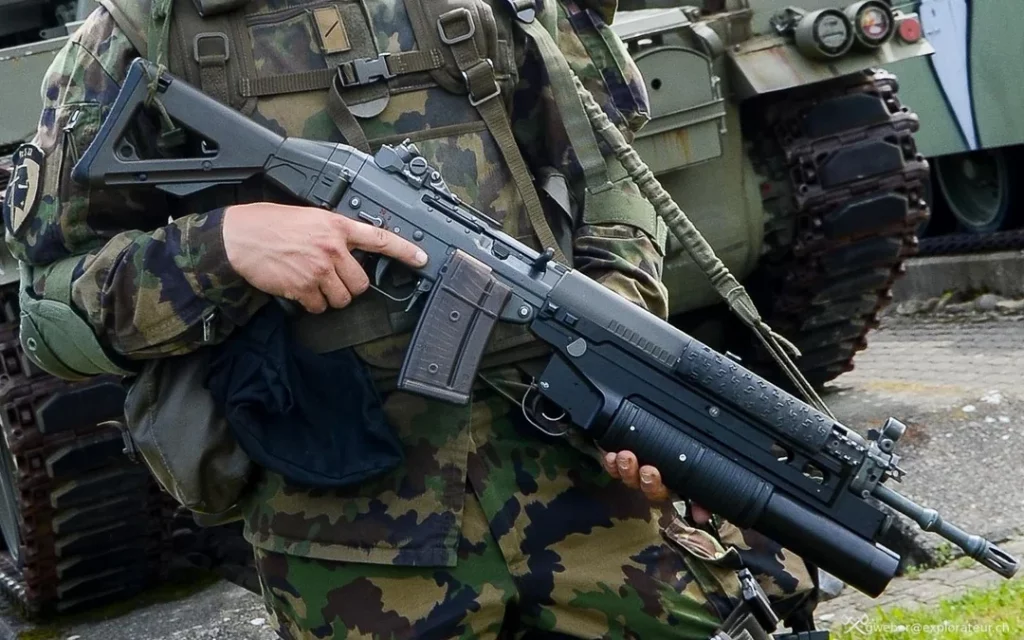
Global Adoption and Use
The SIG SG 550’s adoption by the Swiss Army highlights its reliability and effectiveness in a military context. Its design has evolved to meet the rigors of military use, with the 550 series noted for its robustness compared to earlier models. Despite its higher price point compared to other assault rifles, the SIG SG 550 is valued for its quality, reliability, and accuracy, making it a preferred choice in many global markets.
9. Heckler & Koch HK416 (Germany)
The Heckler & Koch HK416, developed by the German company Heckler & Koch, represents a significant advancement in assault rifle technology. Known for its reliability and robust construction, the HK416 incorporates a gas piston operating system, which is a departure from the traditional direct impingement systems used in many other rifles like the M4. This design choice offers several benefits that enhance the rifle’s performance, particularly in harsh conditions.
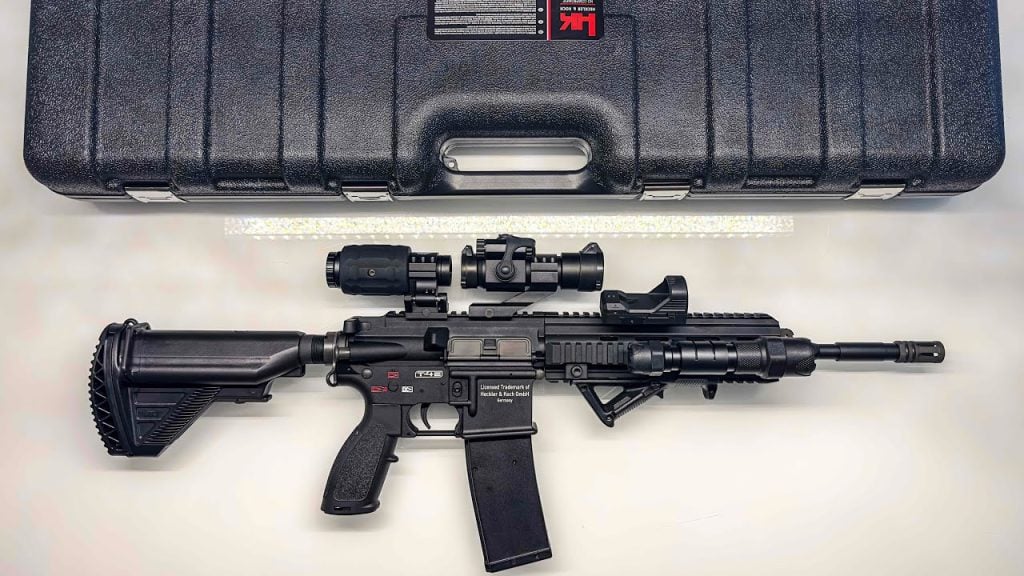
Gas Piston System
The HK416’s gas piston system reduces the amount of fouling in the chamber, which is a common issue with direct impingement systems where hot gases and debris are cycled back into the weapon’s receiver. By minimizing this exposure, the HK416 requires less maintenance and offers improved reliability, a crucial factor in the field.
Enhanced Reliability and Performance
The robust nature of the HK416 makes it less likely to jam and more reliable under diverse environmental conditions. This reliability is further enhanced by its ability to easily integrate a silencer, which can be more challenging in rifles utilizing direct impingement systems. The free-floated barrel and rail system contribute to the HK416’s superior accuracy compared to the M4.
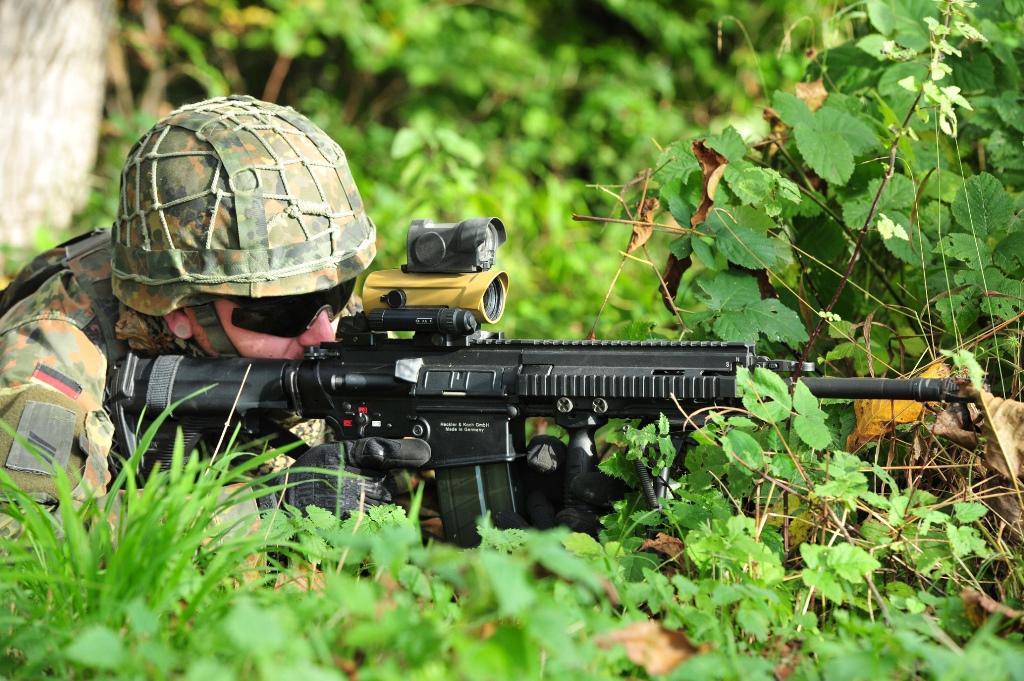
Table of Comparison: HK416 vs M4
| Feature | HK416 | M4 |
|---|---|---|
| Operating System | Gas piston | Direct impingement |
| Maintenance Needs | Less frequent, easier cleaning | More frequent, more intensive cleaning |
| Silencer Compatibility | Easier integration | More complex integration |
| Accuracy | Higher due to free-floated barrel | Standard accuracy |
| Weight | Heavier | Lighter |
| Cost | More expensive | Less expensive |
Tactical Advantages
The HK416 is equipped with ambidextrous controls, making it user-friendly for both left and right-handed shooters. This feature, combined with its reliability, makes the HK416 a preferred choice among special forces and elite military units. Despite its higher cost and the relatively minor improvements it offers over the traditional AR platform, the HK416’s adoption by notable forces, including the US Marine Corps as the M27 Infantry Automatic Rifle and as a Designated Marksman Rifle, underscores its tactical value.
Operational Flexibility
The HK416’s design allows for a smooth shooting experience with reduced recoil, thanks to its gas piston system. It is compatible with a wide range of accessories and attachments, providing users with extensive customization options. Furthermore, the HK416 can be chambered in various calibers, including 7.62x39mm and 6.8mm Remington SPC, enhancing its versatility across different operational scenarios.
Conclusion on Features
Overall, the HK416 stands out for its exceptional reliability, advanced engineering, and adaptability. Its design addresses many of the limitations found in older rifle models, offering enhanced performance that meets the rigorous demands of modern warfare. The HK416’s continued use by elite units and its role in various military capacities highlight its significant impact and effectiveness as one of the top assault rifles in the world.
10. FN SCAR (Belgium)
The FN SCAR, developed by the Belgian manufacturer FN Herstal, is a standout modular rifle system designed to meet the diverse needs of modern warfare. It was introduced to fulfill the requirements of the U.S. Special Operations Command’s (SOCOM) SCAR competition, which sought a highly adaptable and reliable service rifle.
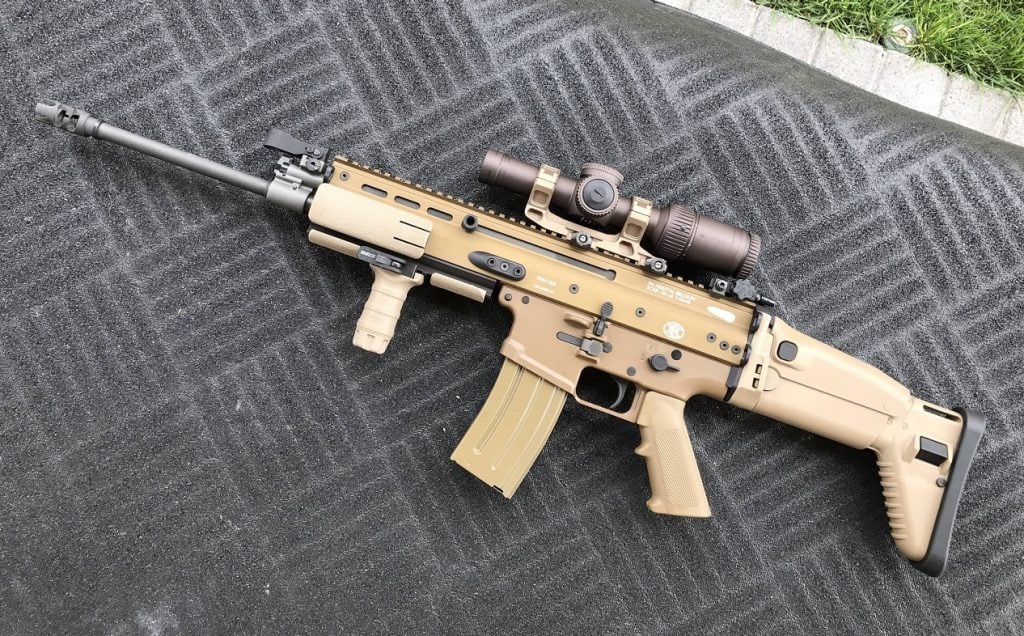
Variants and Specifications
The FN SCAR family includes two primary models: the SCAR-L (Light), chambered for the 5.56×45mm NATO cartridge, and the SCAR-H (Heavy), chambered for the more powerful 7.62×51mm NATO cartridge. Both models are available in Close Quarters Combat (CQC), Standard (STD), and Long Barrel (LB) variants, catering to different operational needs from urban combat to open battlefield engagements.
Table of Main Variants
| Variant | Cartridge | Barrel Lengths Available | Intended Replacement |
|---|---|---|---|
| SCAR-L (Light) | 5.56×45mm NATO | 10″, 14.5″ | M4A1, Mk 18 CQBR, Mk 12 SPR |
| SCAR-H (Heavy) | 7.62×51mm NATO | 13″, 16″, 20″ | M14, Mk 11 Sniper Rifles |
Design and Features
The SCAR features an integral, uninterrupted Picatinny rail on the top of the aluminum receiver for mounting optics and two removable side rails, along with a bottom rail that can mount any MIL-STD-1913 compliant accessories. The lower receiver includes an M16 compatible pistol grip and a flared magazine well for quicker reloads. A notable design element is the front sight, which flips down to allow unobstructed use of optics.
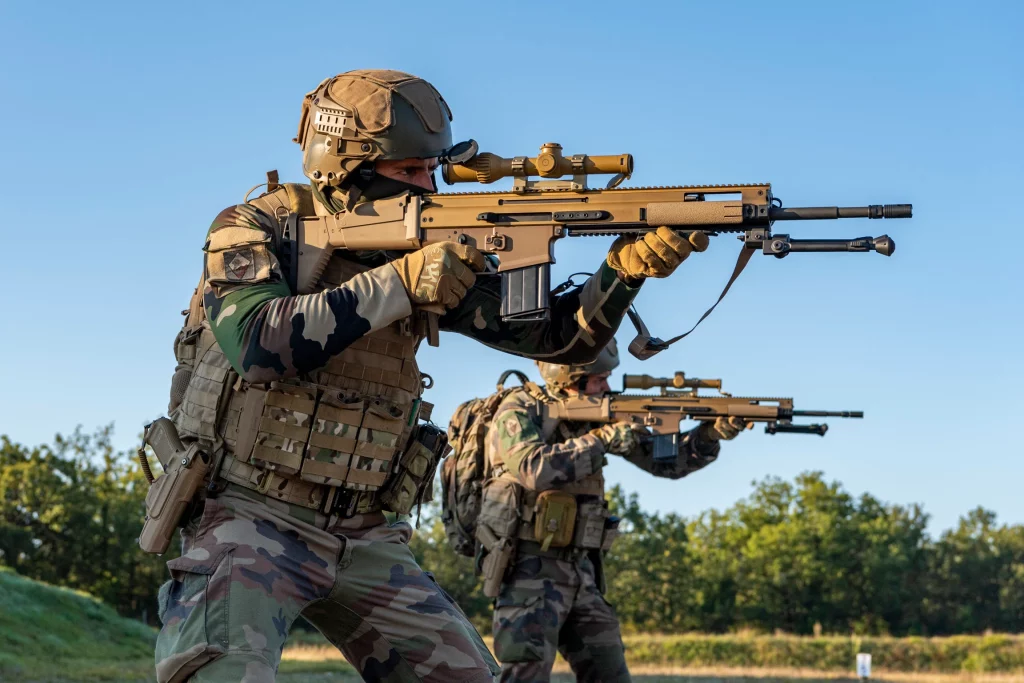
Operational Flexibility and Performance
The rifle’s “tappet” type of closed gas system, similar to that of the M1 Carbine, ensures that the chamber remains cleaner, reducing maintenance frequency. This system, coupled with a bolt carrier that resembles those in the Stoner 63 or Heckler & Koch G36, enhances the SCAR’s reliability and durability under diverse conditions.
Performance Attributes
- Cyclic Rate: Slower cyclic rate to reduce recoil and maintain accuracy during rapid fire and long-range engagements.
- Recoil: Managed recoil facilitates control and precision, which is critical during double taps and sustained fire.
- Ambidextrous Design: Allows for easy configuration changes to accommodate both left and right-handed shooters.
Tactical Enhancements and Accessories
The SCAR’s extensive rail space supports a wide array of accessories including scopes, lights, and lasers, enhancing its utility across various missions. The FN40GL®-L Mk2 grenade launcher can be attached to the lower rail of the FN SCAR-L Mk2, providing additional firepower.
Global Use and Recognition
Manufactured at FN Manufacturing, LLC in Columbia, South Carolina, the SCAR has been adopted by numerous military and law enforcement agencies around the world. It is praised for its exceptional reliability, easy maintenance, and versatility, making it a formidable choice in the arsenal of any fighting force. FN Herstal also offers semi-automatic versions of the SCAR rifles for commercial and law enforcement use, broadening its accessibility and application.
The FN SCAR continues to be a preferred combat weapon due to its modular design and adaptability to a wide range of warfare scenarios, reflecting its ongoing evolution to meet the highest standards of military requirements.
Conclusion
Throughout the exploration of the world’s best assault rifles, we have delved into the rich history, innovative design, and tactical significance of models like the M16, AK-103, and FN SCAR. These firearms stand as testaments to the advancement in military technology and strategy, reflecting their pivotal roles in both shaping and responding to the dynamics of modern warfare. Each rifle, with its unique features and adaptations, underscores the importance of reliability, versatility, and precision in the hands of those tasked with the defense of nations.
The significance of these weapons extends beyond their technical specifications, impacting global security, defense policy, and the evolution of combat tactics. As we consider their lasting legacy and continued development, it becomes clear that the quest for the ideal assault rifle is not only about firepower but also about the ability of nations to innovate in the face of evolving threats. Thus, the study of these rifles illuminates a broader narrative of human ingenuity and the unending pursuit of excellence in the field of defense and security.
FAQs
What are considered the most powerful hunting rifles available?
The most powerful hunting rifles include the 50 BMG, 450 Rigby, 458 Lott, 500 Nitro Express 3″, 338 Lapua Magnum, 416 Remington Magnum, 375 Ruger, and the 30-378 Weatherby Magnum. These rifles are known for their high power and effectiveness in hunting large game.
Which rifle is regarded as the most famous in the world?
The AK-47, also known as the Kalashnikov, holds the title for being the most famous rifle globally. Its widespread use and historical significance have made it an iconic firearm in military history.
What is the most powerful AR-style rifle?
The most powerful AR-style rifle is the AR500 – 500 AUTO MAX RIFLE. This rifle was specifically designed to surpass the power of existing big bore cartridges in the AR platform, featuring a chamber for the 500 Auto Max cartridge.
What assault rifle do the Navy SEALs use?
The Navy SEALs are equipped with the HK416 assault rifle, manufactured by Heckler & Koch. This rifle is optimized for high performance, using 5.56mm ammunition. It has a maximum effective range of 600 meters, a width of 74mm, a height of 240mm, a barrel length of 279mm, and weighs 6.87lbs.

